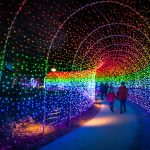Massachusetts
Exploring the Harvard Museum of Natural History
Spanning 16 galleries with 12,000 specimens, the Harvard Museum of Natural History is a Boston treasure, and the perfect spot for indoor fun in bad weather.

Coffee By Design | Portland, Maine
Photo Credit : Katherine KeenanYou look like someone who appreciates a good story
- Unlimited access on the web
- Watch episodes online
Already a subscriber? Sign in







